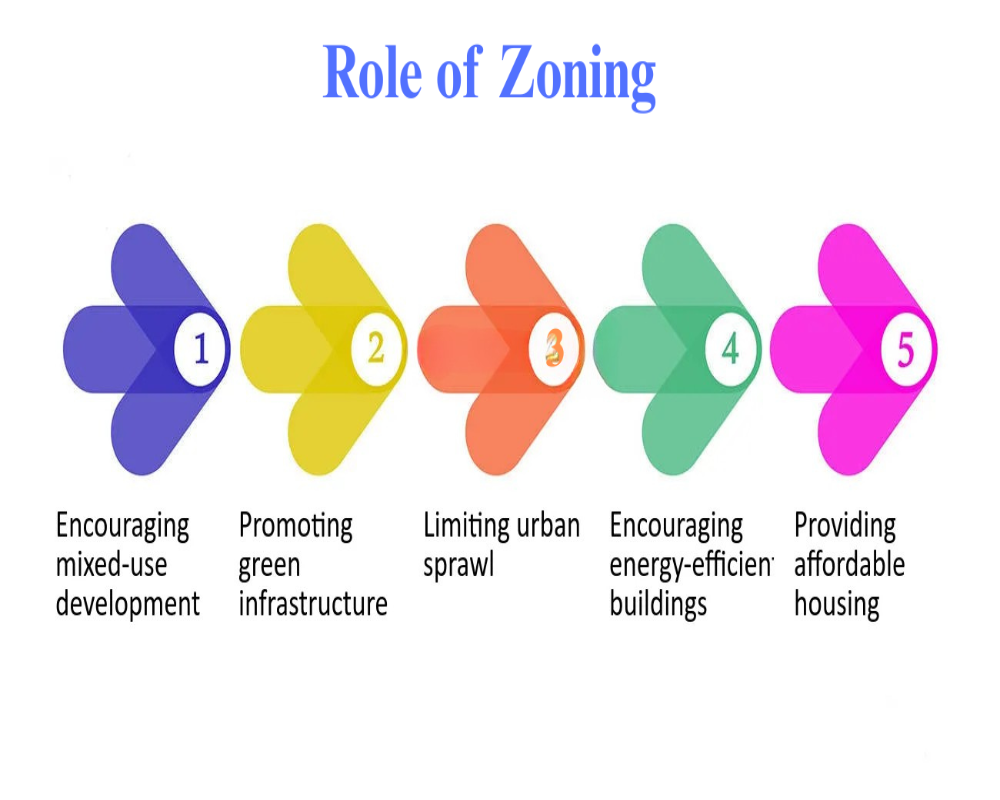The Role of Zoning in Sustainable Industrial Growth
Introduction
Zoning is a powerful land use planning tool that plays a critical role in shaping how industrial development evolves in relation to environmental, social, and economic priorities. As sustainability becomes a central objective in urban and regional planning, zoning regulations are being adapted to ensure that industrial growth not only supports economic productivity but also aligns with ecological preservation and community well-being. Through thoughtful design and enforcement, zoning enables the integration of sustainable practices into industrial development, guiding how industries use land, interact with natural resources, and coexist with other land uses.
Guiding Location and Land Use Compatibility
Zoning ensures that industrial activities are located in areas suitable for their scale, environmental impact, and infrastructure demands. By separating heavy industries from residential, agricultural, or ecologically sensitive areas, zoning helps prevent land use conflicts and reduces the risk of pollution, noise, and traffic disturbances. This spatial management supports the creation of organized industrial zones where infrastructure and services are concentrated, minimizing the environmental footprint and improving operational efficiency.
In sustainable growth models, zoning promotes compatibility by introducing buffer zones, transition areas, and mixed-use frameworks that allow light industrial activities to coexist with commercial or institutional uses in a responsible manner. This adaptability is key to reducing land consumption and supporting compact, resource-efficient urban forms.
Incentivizing Green Infrastructure and Eco-Industrial Practices
Modern zoning regulations increasingly include provisions that encourage or mandate the incorporation of green infrastructure in industrial projects. This may involve requirements or incentives for rainwater harvesting, solar energy use, sustainable landscaping, or on-site waste treatment. Through zoning overlays and special districts, planning authorities can promote the development of eco-industrial parks—clusters of industries that share services, utilities, and resources to reduce environmental impact and increase collective efficiency.
By tying these sustainability features to zoning approvals, municipalities can ensure that industrial developments contribute to long-term environmental goals such as emissions reduction, water conservation, and biodiversity protection.
Managing Resource Efficiency and Utility Planning
Zoning supports sustainable industrial growth by aligning land use decisions with infrastructure capacity and resource availability. It allows planners to evaluate the energy, water, and transportation demands of industrial activities and ensure they are met without overburdening existing systems. For instance, zoning can direct energy-intensive industries toward areas with surplus power infrastructure or restrict high water-use operations in regions facing water scarcity.
By coordinating land use with utility networks, zoning helps reduce resource waste, prevent service disruptions, and lower the cost of public infrastructure upgrades. This strategic alignment is essential to maintaining the ecological balance while enabling industrial productivity.
Supporting Resilience and Climate Adaptation
In an era of increasing climate risk, zoning plays a role in building resilience into industrial development. Regulations can prevent construction in flood-prone or disaster-vulnerable areas, require elevated or reinforced structures, and mandate the inclusion of stormwater management systems. These measures protect both industrial assets and surrounding communities, reducing long-term vulnerability to climate impacts.
Zoning also encourages the decentralization of industrial facilities, promoting redundancy and flexibility in supply chains. This spatial diversity contributes to regional resilience by spreading economic activity and infrastructure investment across multiple zones.
Encouraging Sustainable Mobility and Transportation
Industrial zoning can contribute to sustainable mobility by encouraging the location of factories, warehouses, and logistics hubs near transport corridors, rail networks, and intermodal terminals. This reduces the distance goods must travel and supports the use of cleaner transport options like freight rail. Zoning can also require internal road planning that accommodates non-motorized transport, electric vehicle infrastructure, and smart traffic systems.
By integrating land use and transportation planning, zoning reduces emissions, lowers operational costs, and improves access to jobs, thereby reinforcing both environmental and social sustainability.
Conclusion
Zoning is an essential mechanism for achieving sustainable industrial growth. It regulates how and where industries can operate, ensuring that development aligns with environmental capacity, infrastructure readiness, and community needs. As sustainability continues to shape the global development agenda, zoning must evolve to balance industrial expansion with long-term ecological health and social equity. Through flexible, forward-looking, and enforceable zoning practices, planners and policymakers can guide industries toward a greener, more resilient future.
Hashtags
#Zoning #SustainableGrowth #IndustrialDevelopment #UrbanPlanning #SmartGrowth #SustainableIndustry #ZoningLaws #EconomicDevelopment #GreenInfrastructure #LandUsePlanning #SustainableCities #EnvironmentalImpact #CommunityPlanning #ZoningRegulations #IndustrialZoning #SustainableEconomy #UrbanSustainability #ZoningForGrowth #FutureOfIndustry #ResponsibleDevelopment


